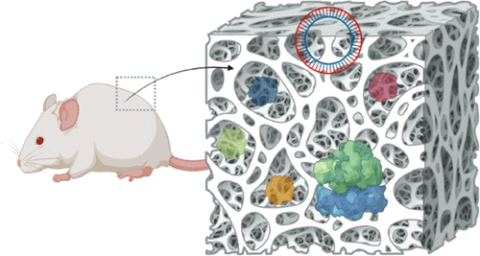Biomaterials capable of delivering therapeutic proteins are relevant in biomedicine, yet their manufacturing relies on centralized manufacturing chains that pose challenges to their remote implementation at the point of care. This study explores the viability of confined cell-free protein synthesis within porous hydrogels as biomaterials that dynamically produce and deliver proteins to in vitro and in vivo biological microenvironments. These functional biomaterials have the potential to be assembled as implants at the point of care. To this aim, we first entrap cell-free extracts (CFEs) from Escherichia coli containing the transcription–translation machinery, together with plasmid DNA encoding the super folded green fluorescence protein (sGFP) as a model protein, into hydrogels using various preparation methods. Agarose hydrogels result in the most suitable biomaterials to confine the protein synthesis system, demonstrating efficient sGFP production and diffusion from the core to the surface of the hydrogel. Freeze-drying (FD) of agarose hydrogels still allows for the synthesis and diffusion of sGFP, yielding a more attractive biomaterial for its reconstitution and implementation at the point of care. FD-agarose hydrogels are biocompatible in vitro, allowing for the colonization of cell microenvironments along with cell proliferation. Implantation assays of this biomaterial in a preclinical mouse model proved the feasibility of this protein synthesis approach in an in vivo context and indicated that the physical properties of the biomaterials influence their immune responses. This work introduces a promising avenue for biomaterial fabrication, enabling the in vivo synthesis and targeted delivery of proteins and opening new paths for advanced protein therapeutic approaches based on biocompatible biomaterials.

